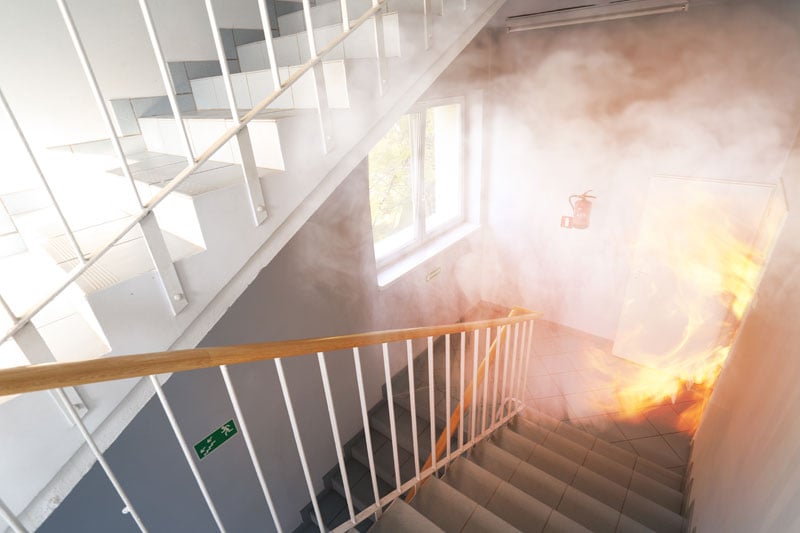
When a fire breaks out in a hospital, the consequences can be severe. Aside from the immediate danger to patients and staff, fire damage can disrupt essential medical services. Quick and effective recovery is crucial to ensure that the hospital can return to normal operations as soon as possible. Understanding the steps to take can make the recovery process smoother and more efficient.
First, it’s important to assess the fire damage thoroughly. This step is about more than just looking at visible damage; it involves understanding the full extent of the harm, including any structural issues and areas affected by smoke and soot. A detailed assessment helps prioritize what needs to be fixed immediately and provides a roadmap for the entire restoration process.
After assessing the damage, immediate actions are needed to ensure safety and contain further harm. These steps include securing the affected areas, checking for any lingering fire hazards, and making sure that patients and staff are safe. Efficient smoke and soot cleanup is also critical since these elements can cause long-term damage and health risks if not handled properly. Finally, restoring and rebuilding critical hospital areas ensures that the hospital can quickly return to providing care. Each of these steps plays a vital role in fast and effective recovery, ensuring that the hospital can continue its important work without prolonged disruption.
Assessing the Fire Damage in a Hospital Setting
Before starting the recovery process, it’s crucial to assess the extent of the fire damage accurately. This helps to prioritize repairs and allocate resources efficiently. Start by checking the entire hospital, focusing on both visible and hidden damages. Look for burnt materials, damaged walls, ceilings, and floors. Document all the areas affected by the fire to support insurance claims and repair estimates.
Next, inspect for structural damage. Fires can weaken the building’s structure, making some areas unsafe. Check load-bearing walls, beams, and the roof for any signs of compromise. If you’re unsure, bring in a structural engineer to assess the safety of the building.
Don’t forget to evaluate the extent of smoke and soot damage. These can penetrate walls, ceilings, and air ducts, affecting areas that weren’t directly touched by flames. Use specialized equipment like thermal imaging cameras to detect hidden pockets of heat and soot. This thorough assessment provides a clear picture of what needs repair and helps in planning the restoration.
Immediate Steps to Ensure Safety and Contain Damage
Safety is the top priority after a fire. Immediately after the fire is out, take steps to ensure the safety of everyone involved and contain further damage. First, restrict access to the damaged areas. Only allow trained personnel to enter until the site has been deemed safe, as unstable structures and lingering hazards can pose risks.
Next, check for any ongoing hazards such as gas leaks, live electrical wires, or flammable materials. Turn off electrical systems and gas lines in the affected areas until professionals can inspect and repair them. Also, ensure that the hospital’s fire suppression systems are still functional or make arrangements for temporary systems if needed.
Once immediate threats are addressed, focus on containing and minimizing further damage. Cover broken windows and doors to protect from weather elements. Use tarps or boards to shield exposed areas and prevent water intrusion, which could worsen the situation.
Simultaneously, begin salvaging critical equipment and documents. Relocate them to a safe area to avoid further damage. This helps in maintaining some level of operational ability and ensures that important medical records and equipment are preserved.
By taking these immediate steps, you can protect both the people and the facility, setting a strong foundation for the recovery process that follows.
Efficient Methods for Smoke and Soot Cleanup
Smoke and soot can cause long-lasting damage and health hazards if not removed properly. Efficient cleanup is crucial to restoring a hospital to its full operational capacity. Here are some effective methods:
1. Ventilate the Area: Open windows and doors to allow fresh air to circulate. Use industrial fans and air purifiers to remove smoke particles from the air. Proper ventilation helps reduce smoky odors and accelerates the cleaning process.
2. Dry Ice Blasting: This method involves spraying dry ice pellets onto surfaces affected by soot. The dry ice evaporates on contact, lifting soot away without leaving any residue. It’s an effective, non-abrasive cleaning method suitable for delicate hospital environments.
3. HEPA Vacuuming: High-Efficiency Particulate Air (HEPA) vacuums are excellent for removing fine particles of soot from surfaces. These vacuums trap the smallest particles, preventing them from reentering the air. Vacuum all surfaces, including walls, floors, and ceilings.
4. Chemical Sponges: Use specialized chemical sponges to wipe down surfaces. These sponges are designed to absorb soot and smoke residue effectively without smearing or spreading it.
5. Professional Cleaning Solutions: Employ cleaning solutions specifically formulated to neutralize smoke odor and remove soot. Apply these solutions to all affected areas, including upholstery and carpets, to ensure thorough cleaning.
By employing these methods, you can efficiently remove smoke and soot, making the hospital environment safe and healthy for patients and staff.
Restoring and Rebuilding Critical Hospital Areas
Once the immediate damage is contained and smoke and soot have been cleaned, focus on restoring and rebuilding critical hospital areas. This step ensures that the hospital can return to full functionality as quickly as possible.
1. Repair Structural Damage: Start with any structural repairs needed. This includes fixing walls, ceilings, and floors that were damaged by the fire. Ensure that all structural elements meet safety standards before moving on to other repairs.
2. Restore Electrical and HVAC Systems: Fire can damage electrical wiring and HVAC systems, which are crucial for hospital operations. Hire professionals to inspect and repair or replace these systems. This step is essential for the safety and comfort of everyone in the hospital.
3. Sanitize and Disinfect: After completing structural and system repairs, thoroughly sanitize and disinfect all affected areas. Use hospital-grade disinfectants to ensure that all surfaces are safe and free from contaminants that could affect patient health.
4. Reinstall Medical Equipment: Once the areas are clean and repaired, reinstall and test all medical equipment. Verify that everything is functioning correctly before resuming normal operations.
5. Conduct Safety Inspections: Before reopening, conduct comprehensive safety inspections to ensure that all repairs meet regulatory standards. This helps prevent future issues and ensures a safe environment for patients and staff.
By focusing on these critical areas, you can restore your hospital to a fully operational state, ensuring that patient care continues smoothly.
Conclusion
Fire damage in a hospital is a serious issue that requires a swift and efficient response. By thoroughly assessing the damage, taking immediate safety measures, efficiently cleaning up smoke and soot, and restoring critical areas, hospitals can recover quickly and continue providing essential care. Each step in the recovery process is crucial for ensuring the safety and well-being of patients and staff, as well as protecting the hospital’s infrastructure.
If you need hospital fire damage restoration services, Restoration Masters is here to help. Our experienced team specializes in restoring healthcare facilities quickly and efficiently. Contact Restoration Masters today to ensure your hospital recovers fast from fire damage, allowing you to focus on what matters most—providing quality care to your patients.





